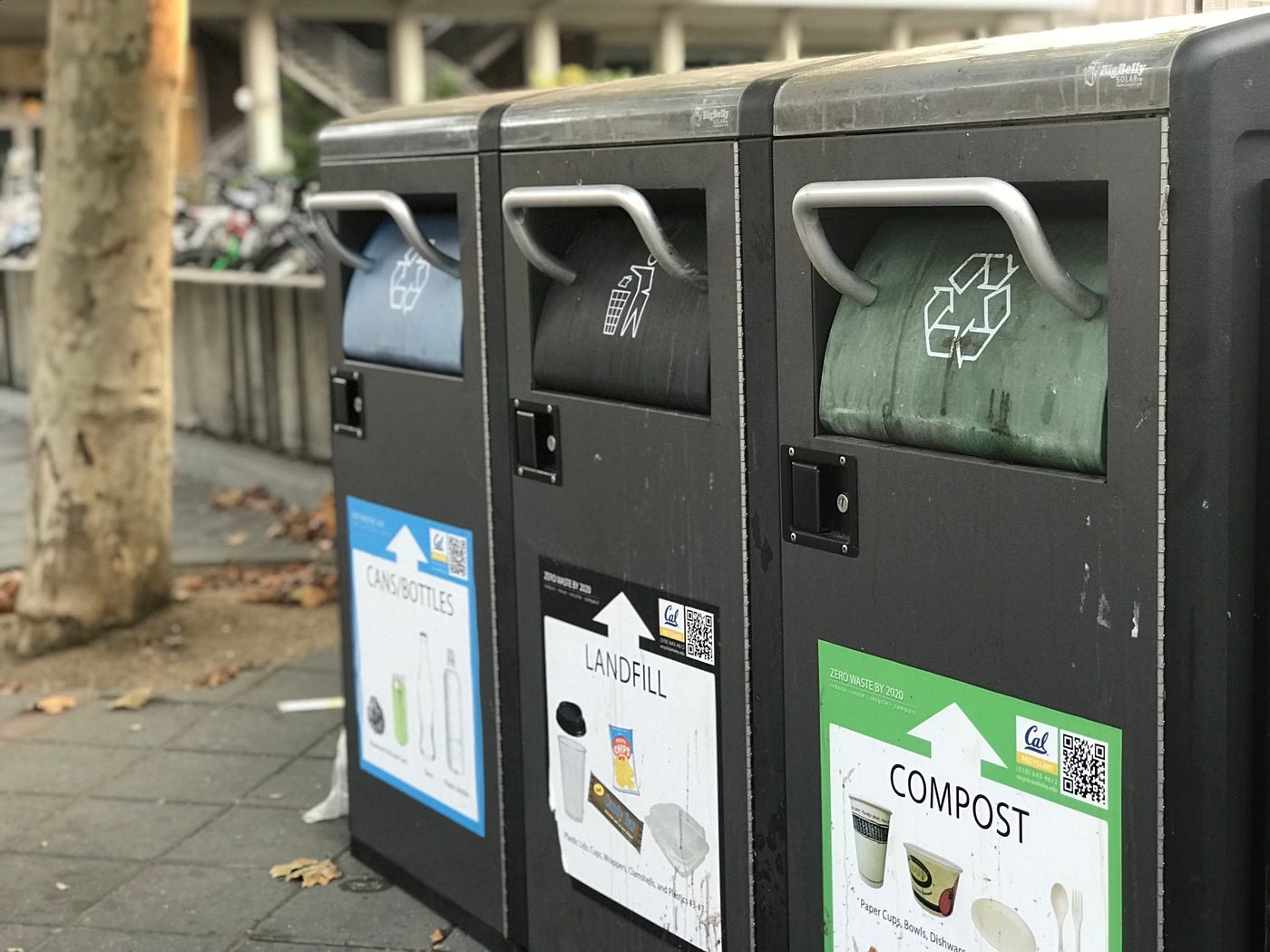
San Franciscans are connoisseurs of three things: burritos, coffee and composting.
We’ve all been there: watching someone stare at the three bins in front of them, trying to figure out where to put what. This game of what almost looks like Bozo Buckets is what differentiates a San Franciscan from an Angeleno or a New Yorker. Typically the San Franciscan always knows the winning bucket.
Why are San Franciscans so intense about recycling and composting? Well, because the city has one of the most comprehensive recycling and composting programs in the country. San Francisco recycles and composts 80 percent of its waste, the highest landfill diversion rate in the country.
According to the San Francisco Department of the Environment, there’s a growing body of scientific evidence that shows that if just half an inch of compost were applied to 5 percent of California’s farmlands, it could keep 28 million tons of carbon from entering the atmosphere.
Here’s how it breaks down: Recology, the city’s waste-collection provider, collects almost 700 tons of compostables and 600 tons of recyclables daily. This helps save the air from methane gas from the landfills, which forms as food scraps and yard waste break down. Methane is a toxic greenhouse gas that’s 72 times more potent than carbon dioxide.
According to the San Francisco Department of the Environment, there’s a growing body of scientific evidence that shows that if just half an inch of compost were applied to 5 percent of California’s farmlands, it could keep 28 million tons of carbon from entering the atmosphere. That’s the same as emissions from 6 million cars. So when you put your banana peel or leftover Chinese food into the composting bin, it’s having an impact on global climate change.
San Francisco has a goal of being a zero-waste city by 2020.
Now is as important a time as ever to keep those greenhouse gases at a minimum. In order to prevent the worsening of the effects of global warming, temperatures can’t increase by more than 3.6 degrees Fahrenheit. Considering that we’re supposedly on track to max out the earth’s carbon budget, it’s important to be hyper-vigilant about landfill waste. Plus, San Francisco has a goal of being a zero-waste city by 2020.
Recently, the city rolled out a new recycling program to welcome more items to the blue bin, such as bagged bubble wrap and coffee cups. The city is also planning on changing bin sizes over the next couple of years, making the trash bin only 16 gallons and the blue bin 64 gallons. The green composting bin will stay the same, at 32 gallons.
Shoving food down your garbage disposal doesn’t count as composting either.
“The visual cue we want to send is that there’s no reason to put most of your items in the black bin. They have a home,” said Debbie Raphael, director of the San Francisco Department of the Environment.
But not everyone is perfect. The big problem is that some San Franciscans, especially restaurants, throw plastic and glass into compost bins, which causes a huge problem. The plastic can’t be spread over farmland, and it’s really hard to separate from the rest of the compost in green bins.
Shoving food down your garbage disposal doesn’t count as composting either.
“When you put food down the garbage disposal, it ends up in the sewage-treatment plant,” said Raphael. “That food is lumpy and difficult to process. If it contains grease, it can clog pipes. When it gets to the sewage-treatment plant, the bacteria try to break it down, but you often end up with sewage sludge, or something we call biosolids. That’s very difficult to get rid of, and most farming communities don’t want to spread biosolids on their land.”
So there you have it. Next time someone gives you a big fat eyeroll for correcting you on your bin of choice, know that it’s because that decision is part of a bigger plan — and it really can make an impact on the earth.







